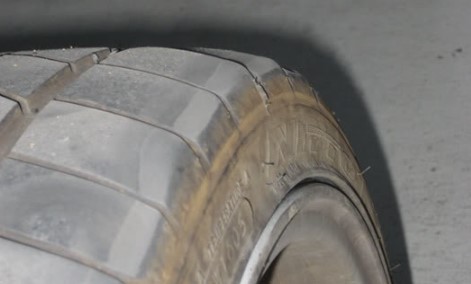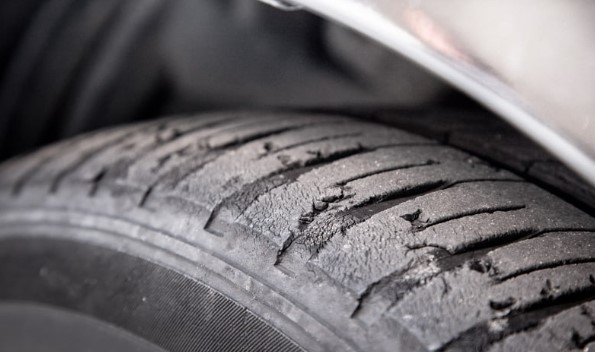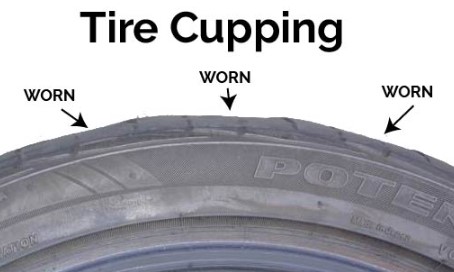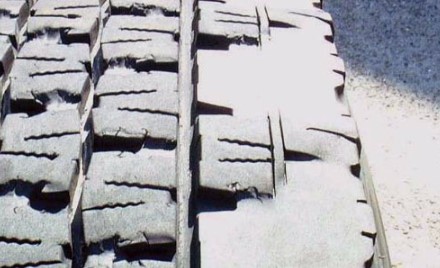It is important for car owners to be aware of the importance of proper tire maintenance. Without paying attention to tires, drivers can put themselves at risk due to poor handling and braking. One common issue experienced by many drivers is cupping, which is an irregular wear on certain parts of the tire tread. To help identify if this problem has occurred, keep your eyes open for signs such as uneven or irregular wear patterns on your tires.
To prevent potential issues with cupped tires from worsening, it’s essential to have a better understanding of what causes them and how they can be fixed. If you ever find yourself asking questions like “Have I got cupped tires?” or “How do I fix my cupped tires?” then today’s guide will provide you with valuable information that might just save you time and money in the long run!

What Exactly is Tire Cupping?

Tire cupping is an abnormal pattern of tire wear which results in a series of scoops or worn patches along the circumference. This type of wear takes place due to inadequate tire alignment, causing sections to be prematurely worn out independently from other areas on the tread. The cupping can range from 3-4 inch intervals across each tire, and when extreme cases occur, it can cause the tires to bounce instead of staying connected firmly with the ground. It’s important for drivers to recognize this type of uneven tire wear as soon as possible in order to ensure safe driving conditions and prolonging their vehicle’s lifespan.
What Are the Effects of Tire Cupping?

- Shakes and Vibrations: If you experience excessive vibrations or shaking while driving, either through the steering wheel or your seat, it may be a sign of tire cupping.
- Tire Noise: Cupped tires produce an uneven wear pattern on the tread rubber, causing a loud and rhythmic noise when driving at highway speeds.
- Vehicle Veering to One Side: Unbalanced or misaligned tires due to tire cupping can cause your car to turn left or right unexpectedly while driving straight or turning.
- Visual Signs: A visual inspection of the tread will reveal patches of uneven wear which is a telltale sign of tire cupping.

What Are the Causes of Tire Cupping?

Cupped tires are a sign of several potential suspension issues. In order to diagnose and repair the problem, it is important to be aware of some common causes. These include uneven tire pressure, worn shocks or struts, misaligned wheel bearings, bad wheel alignment and unbalanced wheels. It may also be due to excessive age and wear on the vehicle’s suspension components. Proper maintenance and timely repairs can help prevent cupping from occurring in the future.
Tire Misalignment
Tires with an alignment issue will have an uneven surface contact when in use, which can disrupt the balance of pressure distributed across the tread. As a result, there may be cupping or a “sawtooth” wear pattern that appears on the treads as they are being used. Cupping is caused by unequal pressure applied to each side of the tire’s tread due to misalignment, rather than even and optimized contact across all areas of the tire.
Worn Suspension Parts
The suspension on a car is essential in ensuring that the tires remain in constant contact with the road. However, if certain parts of the suspension are worn or damaged, such as bushings, struts and shock absorbers, it can lead to increased bouncing of the tires during operation. This can cause uneven tire pressure points and eventually lead to tire cupping. It is important for drivers to regularly check their suspensions for wear and tear so that any issues can be addressed quickly before further damage occurs.

Unbalanced Tires
When a vehicle’s four tires are unbalanced, it can lead to cupping. This is because the pressure of the tire will be unevenly distributed due to its imbalanced state, increasing the weight and stress on certain areas of the tread pattern. If left unresolved for too long, this could cause severe damage in some areas and result in cupping or premature wear. It is important to make sure that your tires are balanced correctly for optimal performance as well as safety reasons.
Low-Quality Tires
It is important for any vehicle owner to select quality tires for their car in order to ensure optimal performance. Poor-quality tires may lead to tire cupping due to the lower grade materials used, so it is important that the best possible product be chosen. Quality tires can help reduce wear and tear on a vehicle over time, saving money in the long run while also improving safety on the roads.
How to Fix Cupped Tires

For those seeking a solution for cupped tires, the answer is clear: replacing them is the only way to ensure proper and safe performance. There is no method of repair that can fix wear on significantly cupped tires; even if the underlying cause was corrected, it would still be unsafe to drive with them due to their effect on handling and traction. Ultimately, it’s best to err on the side of caution by investing in new tires as soon as possible.
Fixing the Issue
Once the decision has been made to replace the tires, it is important to identify and address the root cause of tire cupping. The best way to do this is by visiting a professional repair shop where an expert mechanic can inspect your car’s suspension, wheels, and tires. If replacing the tires is recommended, it should be pursued without delay. If new tires are not needed, then the mechanic will rotate and rebalance them after any necessary parts have been replaced. Rotating the tires helps even out their wear pattern while balancing ensures proper weight distribution in each tire for maximum performance results.
How to Prevent Cupped Tires
Regular tire maintenance is essential in order to extend the life of your tires and prevent wear issues like cupping. The most effective way to manage cupped tires is prevention. It’s recommended that you have your tires checked every six months, as well as maintain proper air pressure for optimal performance. By following a regular tire maintenance plan, you can avoid having any issues with cupped tires in the future.
